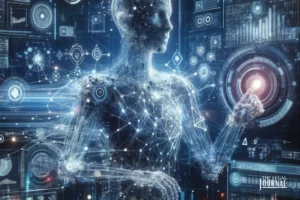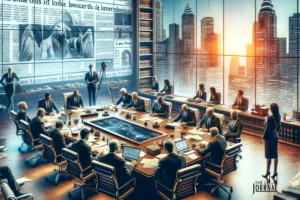The Transformative Role of Artificial Intelligence in the Legal Sector: A US Supreme Court Perspective
In the rapidly evolving world of artificial intelligence (AI), the legal field stands at a crossroads. U.S. Supreme Court Chief Justice John Roberts, in his recent year-end report, highlights the transformative impact of AI on the legal profession. While acknowledging the potential benefits of AI, such as increased access to justice and efficiency in legal research, Roberts also urges “caution and humility” in its application, especially given the technology’s limitations and risks, including privacy concerns and the inability to replicate human discretion.
Key Points:
- Chief Justice John Roberts’ Cautious Stance: U.S. Supreme Court Chief Justice John Roberts emphasized the need for “caution and humility” in integrating artificial intelligence (AI) into the legal field, acknowledging both its potential benefits and significant risks.
- AI’s Potential Benefits and Risks: The potential benefits of AI in the legal sector include increased access to justice for indigent litigants and enhanced efficiency in legal research. However, these benefits are counterbalanced by risks such as privacy concerns and the technology’s current inability to replicate human discretion.
- Issue of AI-Generated ‘Hallucinations’: A significant challenge highlighted by Roberts is the occurrence of AI-generated “hallucinations,” or fictitious content, which has led to instances of lawyers inadvertently using non-existent case citations in legal documents.
- Real-World Implications and Instances: The issue of AI hallucinations was exemplified in an incident involving Michael Cohen, former lawyer to Donald Trump, who mistakenly included fake AI-generated case citations in an official court filing.
- Regulatory Response from the Legal Community: In response to these challenges, the 5th U.S. Circuit Court of Appeals in New Orleans proposed a rule to regulate the use of generative AI tools in legal practice. This rule requires lawyers to certify the accuracy of any AI-generated text used in court filings, ensuring human oversight in the use of AI in legal documentation.
Roberts’s ambivalent stance reflects the complexity of AI integration in judicial processes. AI’s capability to revolutionize case resolution and democratize legal assistance for underprivileged litigants is countered by significant challenges. Notably, the phenomenon of AI-generated “hallucinations,” or fictitious content, has led to instances of lawyers citing non-existent cases in court documents, an issue that Roberts warns against. This problem was recently highlighted when Michael Cohen mistakenly included fake case citations from an AI program in an official court filing, underscoring the need for careful scrutiny of AI-generated content.
In response to these challenges, the 5th U.S. Circuit Court of Appeals in New Orleans has proposed a pioneering rule to regulate the use of generative AI tools by lawyers. This rule would mandate attorneys to certify that any AI-generated text in their court filings has been accurately reviewed by humans, ensuring the reliability of legal documents in the AI era.
As AI continues to reshape the legal field, it becomes imperative for legal professionals to balance technological advancements with a commitment to ethical and accurate practice. Chief Justice Roberts’s call for caution is not just a warning but a roadmap for navigating this new terrain responsibly. It is a reminder that while AI can aid the legal process, human judgment and discretion remain irreplaceable. This moment in legal history calls for a collaborative effort to integrate AI responsibly, ensuring that the pursuit of justice remains grounded in human values and expertise.
Citation:
- Kruzel, John. “US Supreme Court’s Roberts urges ‘caution’ as AI reshapes legal field.” Reuters, 31 Dec. 2023. Reuters
- Supreme Court of the United States. “2023 Year-End Report on the Federal Judiciary.” Supreme Court of the United States, 2023.









